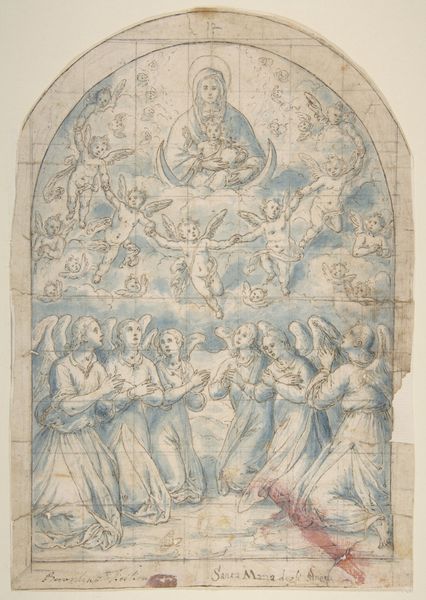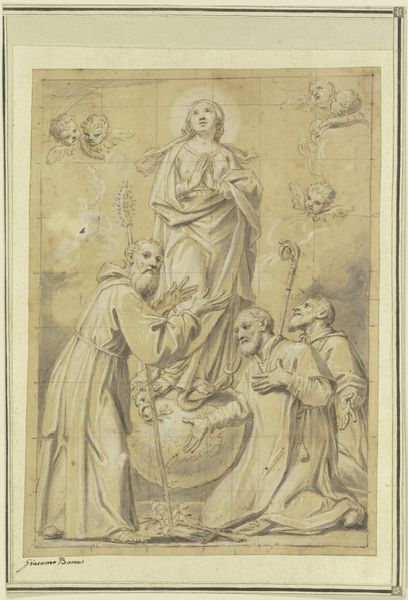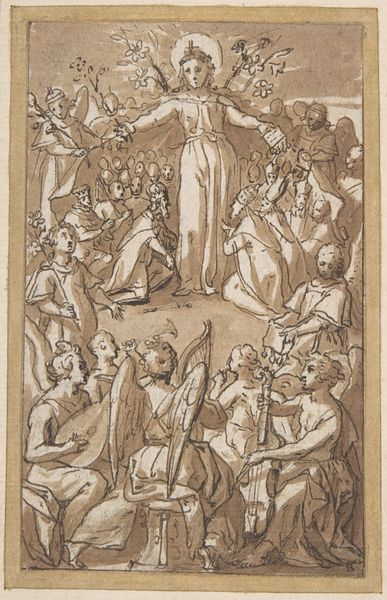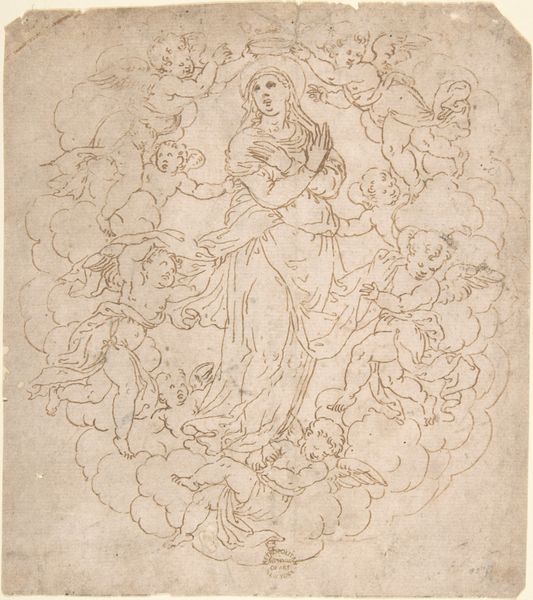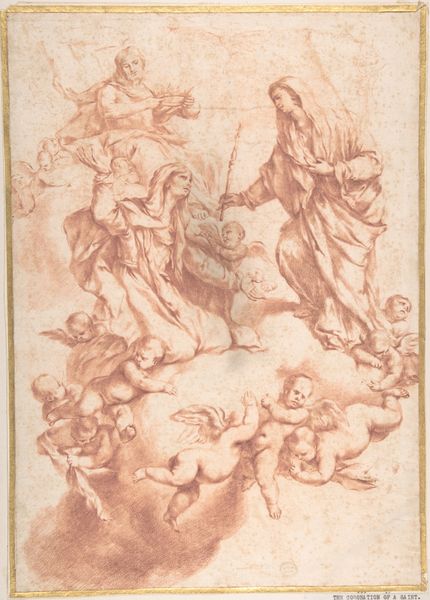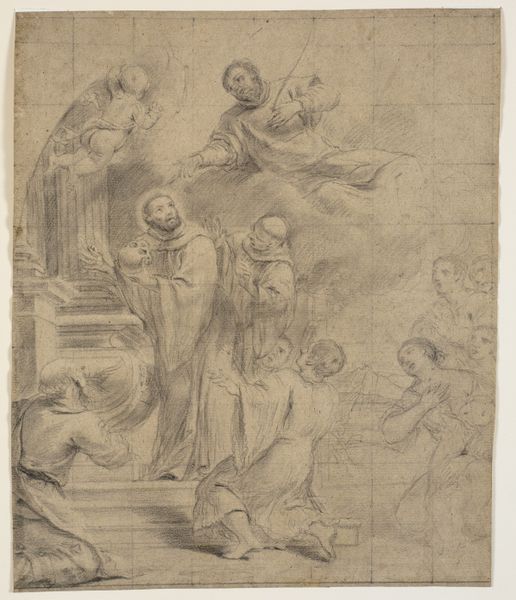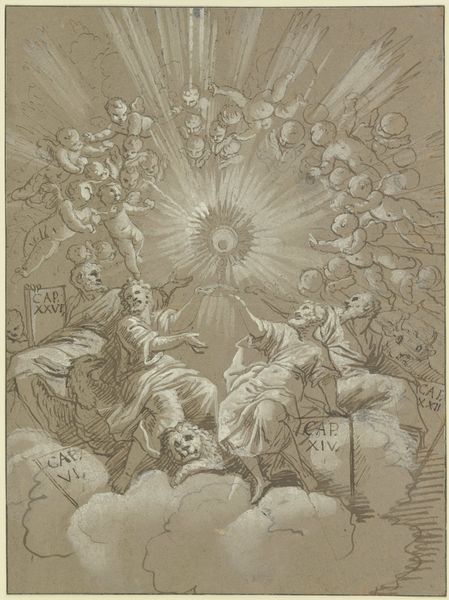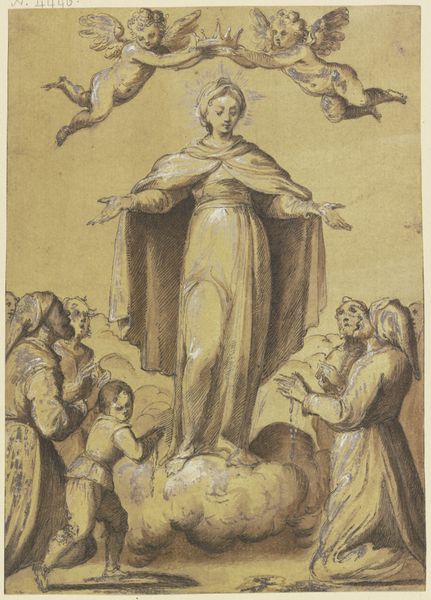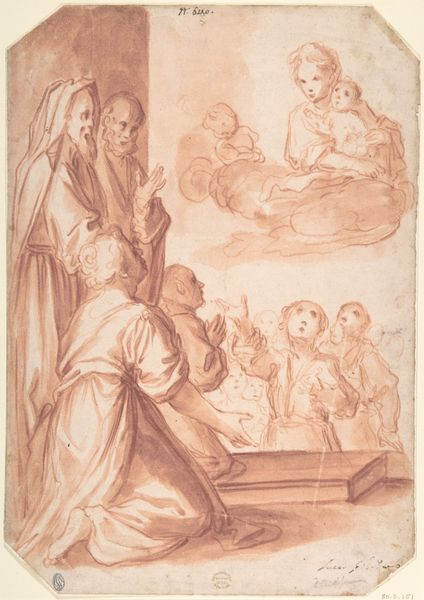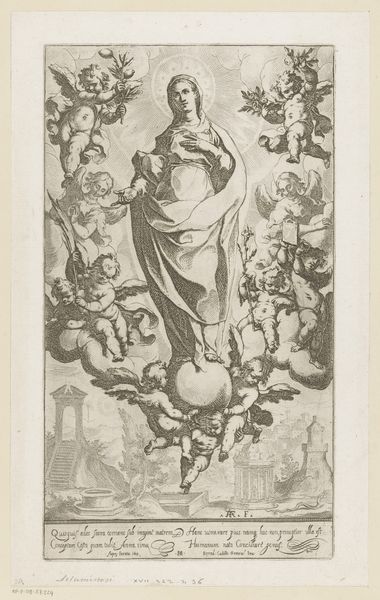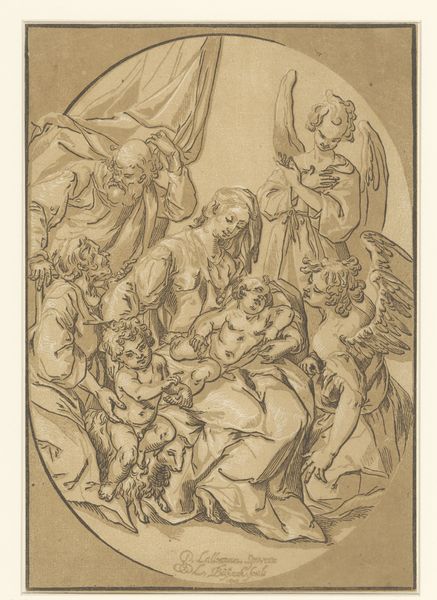
Madonna and Child on a crescent moon appearing to a group of saints, priests and laymen 1544 - 1618
0:00
0:00
drawing, ink, pen
#
drawing
#
narrative-art
#
etching
#
figuration
#
ink
#
ink drawing experimentation
#
pen-ink sketch
#
pen
#
italian-renaissance
Dimensions: 266 mm (height) x 153 mm (width) (bladmaal)
Curator: Before us is a pen and ink drawing by Giovanni Guerra, executed sometime between 1544 and 1618, titled "Madonna and Child on a crescent moon appearing to a group of saints, priests, and laymen." Editor: It feels…ethereal, yet structured. The layering of figures ascending towards the Madonna creates this beautiful visual hierarchy, and the sepia tones evoke a sense of reverence. What a contrast to the power dynamics one sees today in art dealing with similar themes. Curator: Indeed. Guerra’s rendering here, located in the Statens Museum for Kunst, is steeped in the visual language of the Italian Renaissance, reifying established power structures. Consider how the Madonna, poised regally on the crescent moon, holds the Christ Child. It visually cements the Church's claims of divine legitimacy at a time of growing sociopolitical turmoil. The supplicant figures below serve as potent imagery of the relationship between the earthly and divine realms. Editor: And that moon itself, a complex symbol. It suggests purity and her perpetual virginity but also the fluctuating nature of faith and the ever-changing status of women's identities within these established structures. Even the cherubic faces floating around them echo themes of hope and innocence – were these themes challenged during Guerra's lifetime, do we know? Curator: Absolutely. While the image is ostensibly religious, we must situate it within the religious and political upheavals of the late 16th century. The Protestant Reformation posed a significant challenge to the Catholic Church’s authority. Visual art such as Guerra's became crucial tools for reaffirming and reinforcing Catholic doctrine in the face of rising Protestant influence, almost like propaganda in rendering Mary. Editor: Yes, seeing the artwork framed as political commentary adds a powerful layer. The upward gaze of the saints becomes an almost desperate appeal in a changing world order. The artist is showing us not just a static scene but an ongoing struggle for acceptance and stability, reflected in his subjects reaching up as if pleading. Curator: Exactly. Considering Guerra's world allows us to look at what messages he was communicating about faith, power, and community to an audience struggling through turbulent times. Editor: It's fascinating how unpacking historical narratives within an image reframes our own perceptions. Thank you for providing such crucial context; now the pen and ink really seems to scream from the past about the tensions and hopes of the era.
Comments
No comments
Be the first to comment and join the conversation on the ultimate creative platform.

